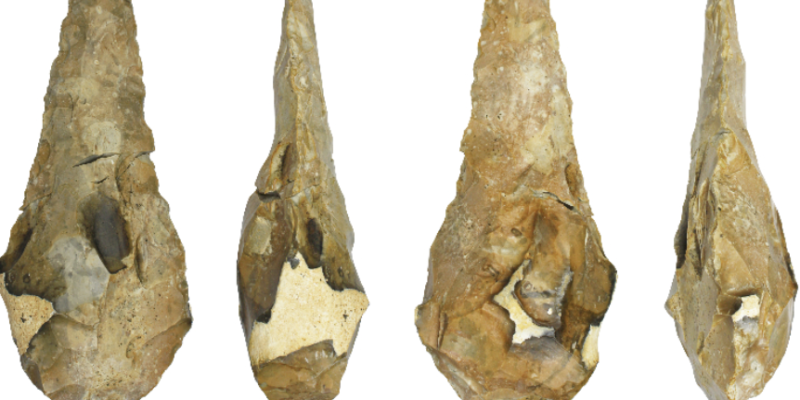
Archeologists from the University College London made a startling find. While doing research near the city of Kent, Letty Ingrey found nearly 800 prehistoric stone artifacts made 300,000 years ago. The most shocking of the items cataloged by the team included a gigantic axe–one that was fit for a giant.
The hand axes were uncovered at Maritime Academy, Frindsbury, within the Medway Valley, reported The Daily Caller. Two of the tools were classified as “giant” by the research team, according to the study published in Internet Archaeology.
Among the collection of finds are two “giant” hand axes made from flint, which according to a study published in the journal Internet Archaeology, are among the largest stone tools from the Palaeolithic period found in Britain, writes Heritage Daily.
The largest of the two handaxes measures 29.5 centimetres in length, comparable to similar examples previously found in the Thames and Medway regions. Letty Ingrey from the UCL Institute of Archaeology, said: “These handaxes are so big that it’s difficult to imagine how they could have been easily held and used. Perhaps they fulfilled a less practical or more symbolic function than other tools, a clear demonstration of strength and skill.”
Dr Matt Pope, said: “A programme of scientific analysis, involving specialists from UCL and other UK institutions, will now help us to understand why the site was important to ancient people and how the stone artefacts, including the ‘giant’ handaxes, helped them adapt to the challenges of Ice Age environments.”
Excavations also uncovered a Roman cemetery from the 1st to 4th century AD, which may have been the burial site for a suspected Roman villa located 850 metres to the south. The team found the remains of 25 individuals, 13 of which were cremated, in addition to collections of pottery and animal bones. Nine of the buried individuals were found with goods or personal items including bracelets, and four were interred in wooden coffins.
The findings have been published today in Internet Archaeology @IntarchEditor
Read the open access paper and see our data: https://t.co/NKlovolFlc
View a 3D model of the handaxe: https://t.co/P4wt6dqJyT#MaritimeGiantHandaxe
— UCL Archaeology South-East (@ArchSouthEast) July 6, 2023
The Medway Valley during the time that the tools would have been used would have been a breathtaking sight filled with lush greenery and rolling hills. It was home to many incredible animals such as the red deer, horses, and other now-extinct creatures like the straight-tusked elephant and lion. The tools are considered to have been made by Neanderthals as they began to emerge in Briatin and shared land with other human species.
The valley would have been prime hunting ground. The archeologists said that these kinds of tools were typically used to butcher or skin animals. “Right now, we aren’t sure why such large tools were being made or which species of early human were making them,” Ingrey told one outlet covering her findings.
“This site offers a chance to answer these exciting questions.”










So the OT Bible is true, Giants did roam the Earth in the BC era